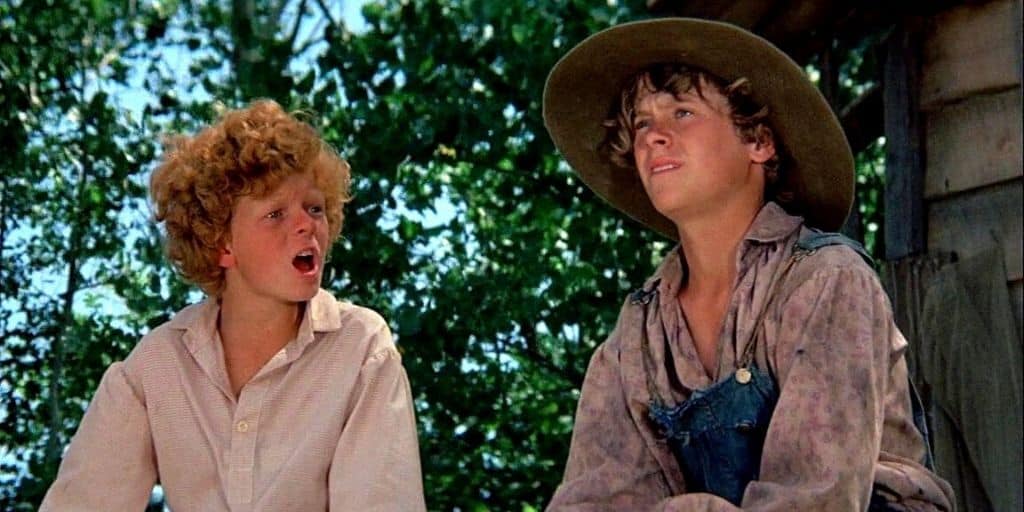Read an analysis of Tom Sawyer
On the surface The Adventures of Tom Sawyer is a child’s adventure story but it is actually an ironic commentary on small-town America in the mid-1800s, with the serious theme of a child growing up to be an adult in that context. In broad terms the novel tracesTom’s – and also Huck’s – development from childish concerns and behaviour to a state of relative maturity. The novel ends before they are adults but the direction of their development is very clear.
The novel appeals to the young adolescent because of the intriguing and delightful adventures of a boy growing up in the mid-nineteenth century, adventures that appeal to the instincts of most young people of any time and country, however. It also appeals to the adult reader in the way that it invokes memories of their own childhood.
Many of the scenes are famous: the scene in which Tom manipulates the other kids into painting a fence he himself was to have painted is as classic and memorable as any scene could be. Tom and Becky lost in the cave, and the boys in the graveyard, capture the essence of childhood, full of fear and excitement. The novel’s characters—Tom, Huck Finn, Becky Thatcher, Injun Joe, and Aunt Polly are among the most familiar in American literature.
The novel’s appeal is down to Mark Twain’s ability to turn the dreams and fears and fantasies of childhood in an obscure southern American town into universal experiences. It is that that makes it one of the favourite, still read, novels of the 19th Century by both children and adults.
The novel is similar in structure to the picaresque English novels of the 18th century, like The History of Tom Jones by Henry Fielding, where, instead of there being a clear plot as one may find in a novel by Twain’s near contemporary, Charles Dickens, it comes in a series of episodes with each one contributing to a coherent picture of the lives of the children of St. Petersburg, and indeed, of the whole community, including the adults. The murder the boys witness and its aftermath provides a central event that feeds into the lesser adventures of the novel.
Apart from the label “novelist” Mark Twain is famous as a humorist. It’s as though humour is burnt into his nature, as though he cannot help anything he writes having a humorous edge. In Tom Sawyer he is, as he is to become famous for, a satirist and commentator on the foibles of human nature. His satire often points sharply at the absurdities of the human race. In Tom Sawyer he takes a beneficent view of the townsfolk, regarding himself as one of them. He is content with somewhat mild ironic observations and we hear his authorial voice indicating his targets from time to time, like pointing out the gullibility of people when the kids fall for Tom’s trick of getting them to paint the fence for him: “…that in order to make a man or a boy covet a thing, it is only necessary to make the thing difficult to attain.”
One of Mark Twain’s main targets in this novel, as in his other works, is the hypocrisy connected with religious services. There is a scene set in Sunday school, which he uses for that kind of satire. He tells us that one boy had memorized so many verses of the Bible so as to win prizes of so many illustrated Bibles that “the strain upon his mental faculties was too great, and he was little better than an idiot from that day forward.”
Mark Twain’s ironic criticism of the adult attitudes and behaviours throughout the novel is set against the development of Tom from childhood to adulthood. He is progressing toward a model of adulthood that is full of hypocrisy. That is a major idea in the novel and something that can’t be resolved. It is that that raises the novel beyond being a simple child’s adventure story.
That’s our Tom Sawyer analysis. Make sense? Any questions? Let us know in the comments section below!

Tom Sawyer characters in the 1973 movie




Leave a Reply
Want to join the discussion?Feel free to contribute!